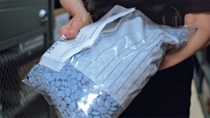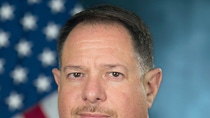Média
„A significant threat to our economy, health and safety”
U. S. Customs and Border Protection is on the frontline in the battle against the counterfeiters. Based in Washington, D. C., USA, the department’s Director of Intellectual Property, Michael Walsh, heads up a staff of international trade specialists and oversees the Los Angeles-based National Targeting and Analysis Group for intellectual property rights. In an interview, he describes some of the job’s main challenges.


As Director of IPR Policy and Programs at U. S. Customs and Border Protection’s Office of Trade, Michael Walsh is national coordinator of efforts to stop counterfeits entering the United States. A 25-year customs veteran, he is a graduate of Harvard’s John F. Kennedy School’s Senior Executive Fellows program. In 2015 his department seized more than 28,000 counterfeit items with a value of over $1.3 billion.
Creating Chemistry: How big a problem is counterfeiting?
Michael Walsh: It’s a significant threat to our economy, as well as health and safety. We’re very dedicated in terms of enforcement actions to try to stop as many of the counterfeit goods coming in as we can.
Which goods tend to be the most counterfeited?
Over the past five years we’ve seen a continued trend where fashion, consumer electronics, footwear, watches, handbags and optical media have been among the most seized items.
On a day-to-day basis, what are the main challenges?
It’s the ever-increasing flow of goods into the country, and trying to use our resources as effectively as we can. The counterfeiters have become very sophisticated, and trying to determine if goods are counterfeit becomes quite a challenge.
What is a typical day for a customs officer?
Officers have their primary responsibility at the border working with passengers, but if they’re working with trade then it’s looking for all the different potential violations. That means ensuring all our trade and intellectual property agreements are complied with, or looking out for concerns with regard to safety. All of that’s part of their day-to-day work. The part relating to intellectual property rights is important because many of the goods that violate these rights have the potential to do harm to the American public.
How are officers being trained and do they specialize in specific market sectors or goods?
That’s an ongoing issue. We work very closely with the rights holders to provide continuous training to frontline personnel. Our frontline officers make the initial determination and work with industry specialists at our Centers of Excellence and Expertise to make further determinations. It is a combination between making the initial determination and specialists making the final determination, working closely with the rights holders themselves. We try to expedite that as quickly as possible to make sure we’re not holding up legitimate goods.
“The counterfeiters have become very sophisticated, and trying to determine if goods are counterfeit becomes quite a challenge.“
Michael Walsh, Director of IPR Policy and Programs at U. S. Customs and Border Protection’s Office of Trade
What are the department’s most effective tools?
I think it’s the coordination and cooperation with the private sector, letting us know about areas of concern, providing good product identification guides, and making sure we can rely on them when we have questions. We have a lot of sophisticated tools in our laboratory and scientific services, but the work with the private sector is critical. We’re looking to continue to evolve as counterfeiting techniques evolve, and we’re continuously giving new instructions to our folks on what to look for, how to look for it, and what to do about it.
Will you reveal to us some of the more unusual measures counterfeiters take to import their goods?
People will go to great lengths. We’ve seen outer shells on handbags that, when taken off, have brand names underneath, or labels sewed over the tags on sneakers that can be removed to show the counterfeit label afterwards. People can be very creative.
